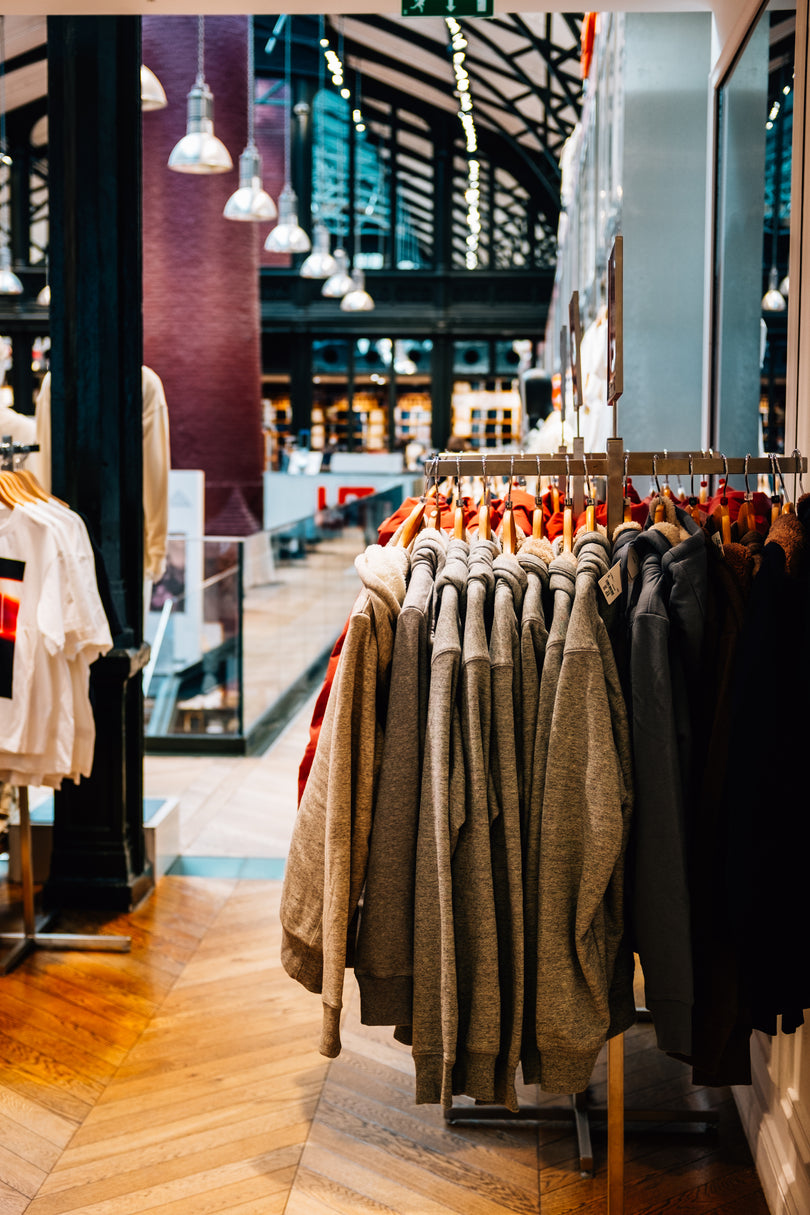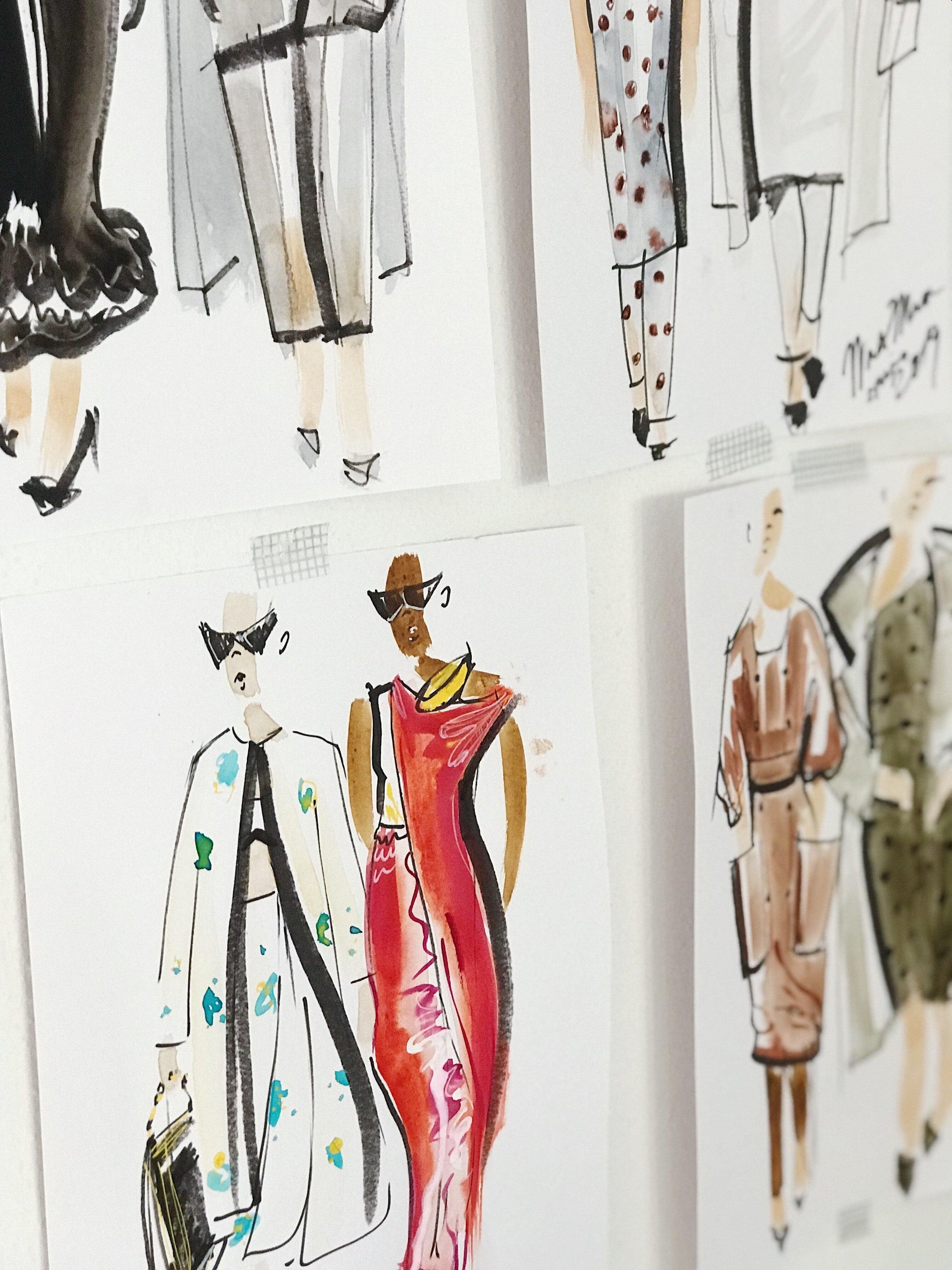We all have clothes that we don’t wear anymore; an old t-shirt three sizes too small with a hole in it, a dress we bought for an event that’s been collecting dust since… need we go on? Our fast fashion culture has left us with a wardrobe full to bursting of clothes we no longer reach for, and many of us are looking for a sustainable fashion solution.
It’s a well-reported slow fashion fact that in 2019 one in three young women considered an item worn just once or twice to be old, but following the pandemic this mindset has changed; 71% of young consumers now say they’re planning to keep the items they already have for longer. More of us are asking ‘what is the slow fashion trend?’ and finding that it resonates with them in a way that fast fashion can’t - instead of a continuous cycle of trends, slow fashion encourages you to find your personal style and love the clothes you have.
As we’ve previously explored, the industry’s future lies in a circular fashion economy. And it’s not something that companies can do alone; consumers must also get on board if we want to see any real progress. In order for the circular fashion industry to work, we need to shift our thinking from a ‘take-make-use-waste’ relationship with our clothes into a considered, slow fashion mindset; paying as much attention to what happens after ownership just as much as we do when first choosing to buy something.
Before buying anything, read our tips on introducing sustainable fashion to your wardrobe; and to give you some inspiration on prolonging your clothes, we’ve put together a few ideas on delaying sending them to landfill, from upcycling to renting.
Five alternatives to throwing out your old clothes:
1. Monetize your wardrobe
You know what they say; one man’s trash is another’s treasure. Consider putting your old favourites on a rental platform to give them a new breath of life whilst making some money on the side. Renting out your formal wardrobe in particular can make a huge difference, as event-wear is often only worn once and then shoved to the back of our wardrobes, but there’s also a demand for casualwear, too. It’s quickly becoming a popular alternative for shoppers; popular rental platform ByRotation saw a 600% increase in rentals in 2020, cementing the idea that money can be made lending out your old clothes.
2. Rework, revamp
Up there with baking banana bread and learning a new languarge, upcycling clothes was one of the most popular pandemic past-times for Gen-Z. And what’s not to like? You can learn a new skill and turn your old clothes into something unique and personal, all whilst keeping fabric out of landfill. The hashtag ‘upcycling fashion’ has more than 36 million views on TikTok, showing a variety of methods for altering garments; painting, stitching, cropping, dyeing, embroidering and countless more. Get your sewing kit out and start creating!

3. Pass it on
Haven’t you heard? Hand-me-down’s are the new black. Second-hand markets have exploded over lockdown and are set to overtake fast fashion in popularity by 2023, and as of 2021 Depop has over 21 million users, all searching for their latest second-hand find. It’s as simple as uploading photos and descriptions of your old clothes and watching them sell in record-time.
If you don’t want to go down the online route, there’s plenty of alternatives; donating to a charity shop, attending a clothes swap, giving directly to a homeless shelter, or asking your friends and family if they’re interested in anything.
4. Reinvent the wheel
Struggling to find chic teatowels? Turn to your old dresses. If you’ve got a garment that’s beyond mending, no-one wanted at the clothes swap, or your simply in need of more cleaning cloths, look no further than your wardrobe.
Transforming unwearable clothes into household items is the lowest effort form of upcycling you can get; simply tear or cut-up an old garment into rectangular cloths and get to cleaning - bonus points for pretty patterns. Maybe skip over your old sequin dresses and other unsuitable materials though!
5. Send it back
Ever thrown away an old t-shirt full of holes because you’re too ashamed to take it to a charity shop? That’s where textile recycling comes in. If you can't fix, upcycle, sell, share or give away unwanted items, they can still go into a textile recycling bank to be broken down into fibres and turned into something new. It’s then labelled as ‘post-consumer waste’ and can be used in a variety of sustainable products, from new clothing to carpets! Simply google ‘textile recycling near me’ to find your local services, fill up a bag of unusable clothes, and send it off!




